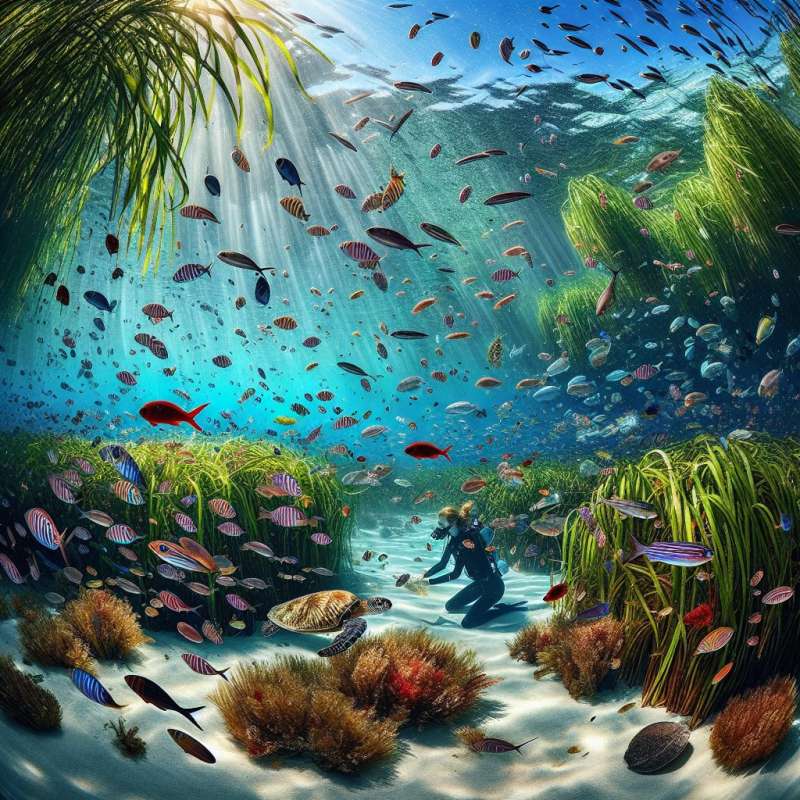
Introduction to Seagrass
Seagrass are flowering plants submerged in marine environments. Unlike seaweed, seagrasses are terrestrial plants that adapted to living in salty, submerged conditions.
Global Seagrass Distribution
Seagrasses are found in every continent except Antarctica. They prefer shallow waters where sunlight penetrates, supporting photosynthesis, essential for their survival.
Ecological Importance
Seagrasses provide habitat, nursery grounds, and food for numerous marine creatures. They also stabilize sediments and improve water quality by filtering pollutants.
Seagrass and Carbon Storage
Seagrasses are vital in combating climate change, as they sequester carbon up to 35 times faster than tropical rainforests and store it in the sediment below.
Threats to Seagrass Meadows
Seagrass meadows are under threat from coastal development, pollution, and climate change. Almost 29% of known seagrass has disappeared in the last century.
Seagrass Recovery Efforts
Conservationists are actively restoring seagrass by replanting and protecting existing meadows. Public awareness and policy changes are crucial for their recovery.
Unique Seagrass Adaptations
Seagrasses have evolved unique adaptations, including leaves that can filter saltwater, specialized roots for anchoring in shifting sands, and flowers pollinated by water currents.Seagrass Speed Record
Some seagrass species can grow up to 35 cm per day, making them one of the fastest-growing plants on Earth.
Are seagrasses terrestrial plants?
Yes, adapted to marine life
No, similar to seaweed
Only found on land
Company